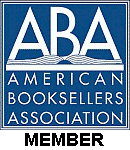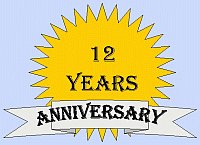Writing for Ninth Art, Lindsay Duff profiles one of the world's finest comic storytellers, the controversial creator of Tintin, who faced depression and accusations of treachery as he worked to bring his enduring creation to the world.
Hergé, real name Georges Remi, was a Belgian cartoonist and creator of the iconic stories of the boy reporter Tintin.
Born in Brussels in 1907, Remi had childhood dreams of being a dashing reporter, a foreign correspondent for a national newspaper. When he realised his talents lay in other areas, he turned his hand to illustrating, and he took his more familiar alias when he started illustrating strips for a Belgian Catholic daily newspaper called Le XXe Siècle.
He was made editor of a weekly children's supplement for this paper, which was to be called Le Petit Vingtième, which Hergé decided would contain American-style comic strips. This debuted on November 1, 1928, but its most famous character didn't appear until the following year.
January 10, 1929
Tintin in the Land of the Soviets, a black and white strip that introduced the two central characters of the Tintin series: Tintin, the boy reporter himself, and his faithful dog, Snowy. His canine companion was often used as a wry commentator on the rest of the story, giving a cynical and sardonic viewpoint as opposed to Tintin's enthusiastic optimism. Hergé named Snowy (or 'Milou' in the original French) after a girl he had liked at school.
The theme of the story, with Tintin investigating the chaotic state of the USSR, was prompted by the managing editor's suggestion, unlike the next few Tintin adventures. These were much more concerned with subject areas that had fascinated Hergé since boyhood - Africa (Tintin in the Congo), prohibition-era America (Tintin in America) and the mysteries of the Middle East and Egypt (Cigars of the Pharaoh).
1934
The Blue Lotus. This particular story is regarded as among the best early Tintin books, and it represents a shift in direction for Hergé, who introduced a much stronger and more realistic political commentary than in previous adventures. This manifests in overt criticism of the Japanese invasion of Manchuria, and more general criticism of the colonial aspirations and domains of the imperial powers of England and Japan.
Also of note in this book was the introduction of a character called Chang, a young Chinese boy who befriends Tintin. This character was based on a real acquaintance of Hergé called Chang Chong-chen, who was a student of the Academy of Fine Arts in Belgium and who encouraged Hergé to more thoroughly research the countries visited by Tintin.
1940
The Crab with the Golden Claws, in which there is the first appearance of the perennial comic relief of Tintin stories, Captain Haddock.
However, real life was far less whimsical. Hergé found himself creating under the watchful eye of Nazi censors as Tintin moved from Le Petit Vingtième to a newspaper with higher circulation, Le Soir, which had unfortunately become a Nazi propaganda mouthpiece.
During the war years, Hergé's output was drastically affected. Completion of The Land of Black Gold had to be delayed until the war's end, and The Black Island and Tintin in America were banned outright for their supposedly seditious content. Oddly enough, Hergé's most stringently anti-Nazi book, King Ottokar's Sceptre, escaped censorship.
 1942
1942
Publication of The Secret of the Unicorn marked the start of Tintin's first double-part adventure. It holds a position of note in the Tintin canon as it established or developed the main cast and their individual back stories, such as Captain Haddock's maritime legacy and his inheritance of his ancestral home, Marlinspike.
1944-47
The forced closure of Le Soir during the creation of The Seven Crystal Balls meant Hergé had time to redraw and recolour the older Tintin strips, although paper shortages meant that each 'album' had to be reduced to 64 pages.
After the war ended, Hergé was unfairly branded a traitor for his work on Le Soir, despite the fact that he despised Nazis. The turmoil of these allegations affected Hergé's work, and in Seven Crystal Balls the reader can perhaps make out a touch of autobiographical detail in Captain Haddock's grim and intense melancholy.
Tintin Magazine was launched after the war, focusing exclusively on Hergé's comics. It quickly established for itself a weekly circulation of 100,000, and the magazine format allowed Hergé to run supplementary material alongside the strip.
1950
Tintin's most famous adventure started with the debut of Destination Moon, as Tintin and friends go to the moon over a decade before the Sputnik satellite was launched. Hergé was finding it difficult to cope with the increased detail and consequent workload, and the book's schedule became increasingly prone to interruptions as Hergé occasionally disappeared to a country retreat due to total nervous exhaustion.
The disrupted schedule wasn't without a silver lining, though, as it led to the creation of a dedicated 'Tintin studio'. This meant that Hergé could now rely on the aid of assistants specialising in various areas such as backgrounds and the technical drawing of airplanes, much in the manner of a modern Manga set-up.
 1958-59
1958-59
Tintin in Tibet. Hergé's marriage was falling apart; he was plagued by nightmares, much as Tintin is in this adventure. The creation of Tintin in Tibet became a cathartic experience, and the emotional tone of the book reflects this. As a further step towards emerging from his depression, Hergé fell in love with a young artist working in the Tintin studio.
1963
The Castafiore Emerald became the first Tintin album to be published in England in the same year as in Belgium and France. It marked a complete subversion of the Tintin 'blueprint' of exotic adventure that Hergé had established over the 30 years of the boy reporter's career, as it takes place entirely in the domestic setting of Marlinspike Hall, and it lacks any proper villains or bona fide 'adventure'. However, it is a deliciously observed satire on the media (with whom Hergé was now thoroughly acquainted), and it represents perhaps the zenith of Hergé's craft as an artist.
1973-76
Tintin and the Picaros, Tintin's final completed adventure, saw him return to South America to help his old friend General Alcazar. In a departure from earlier strips, Tintin receives a complete style makeover, losing the plus fours and suit jacket in favour of more contemporary jeans, a sheepskin jacket and flares.
1979-83
1979 marked the 50th anniversary (or, as it was styled, the '50th birthday') of Tintin, and it marked a special occasion for the cartoonist, as his long-lost friend Chang Chon-chen was located and brought to Belgium to join in the festivities.
However, by this time Hergé was exhausted by both the celebrations and the onset of anaemia and leukaemia, and his health began to fail.
Hergé died in March 1983, aged 75, in a Brussels hospital, with forty-two pages of Tintin et L'Alph-Art planned and plotted. Tintin's final appearance is as a captive of his nemesis, the villain Rastapopoulos, who plans to rid himself of the boy reporter by, fittingly, turning him into a piece of art; a plastic 'sculpture'. A wryly apt end to Hergé's "Adventures of Tintin".
FURTHER READING Tintin: The Complete Companion by Michael Farr, published by John Murray. |
NINTH ART RECOMMENDS
The Calculus Affair (1954): Perhaps the most gripping and tense 'thriller-style' adventure Tintin ever embarked upon. Hergé's narrative skills are at their absolute height, and the intrigue-filled plot never ceases to entertain.
Destination Moon and Explorers on the Moon (1950-1953): The most iconic and best-loved Tintin adventure, as well as one of the most fantastic. The boy reporter joins Professor Calculus, Captain Haddock, the Thom(p)sons and Snowy for a trip to the moon and back that established red-and-white-chequered rockets as the ultimate in stylish space travel, as well as a universal symbol of comics.
HERGÉ ON HERGÉ
"I set out myself on the adventure without any scenario, without any plan: it was really short-sighted work. In fact I did not consider it to be real work, but like a game, like a farce."
"Le Petit Vingtième came out on Wednesday night and it happened sometimes that on the Wednesday morning I still did not know how I would extricate Tintin from the scrape I had unfairly left him in the previous week..." [Numa Sadoul, Entretiens Avec Herge, édition définitive, "La Bibliothèque De Moulinsart", Casterman, Tournai, 1989 p52. Quoted in Tintin: The Complete Companion, by Michael Farr.]
"There are certainly a number of things which my collaborators can do without me and many they can do better, but to breathe life into Tintin, Haddock, Calculus, the Thom(p)sons and all the others, I believe that only I can do that: Tintin (and each of the others) is me, as Flaubert said: 'Madame Bovary, c'est moi!"
"It is highly personal work, in the same way as a painter's or a novelist's. If others were to continue Tintin, they might do better, they might do worse. One thing is certain, they would do it differently and so it wouldn't be Tintin any more!" [Ibid, p66]
About the author
Lindsay Duff is a literature graduate student and researcher.
Source: Ninth Art article archives at the Internet Archive Wayback Machine
Ninth Art endorses the principle of Ideological Freeware. The author permits distribution of this article by private individuals, on condition that the author and source of the article are clearly shown, no charge is made, and the whole article is reproduced intact, including this notice.
Related articles:
Georges 'Hergé' Remi Creator of Tintin, The Final Years by by Holly Franklin
The Tintin Movie Geared for Sucess with Jackson and Spielberg On Board by Holly Franklin
The Adventures of Tintin in Film
Home
Older Article: Jules Verne, the Fitzroy editions edited by I. O. Evans and their Jerome Podwil cover illustrations for Ace Books (part 1 of 2 parts)










